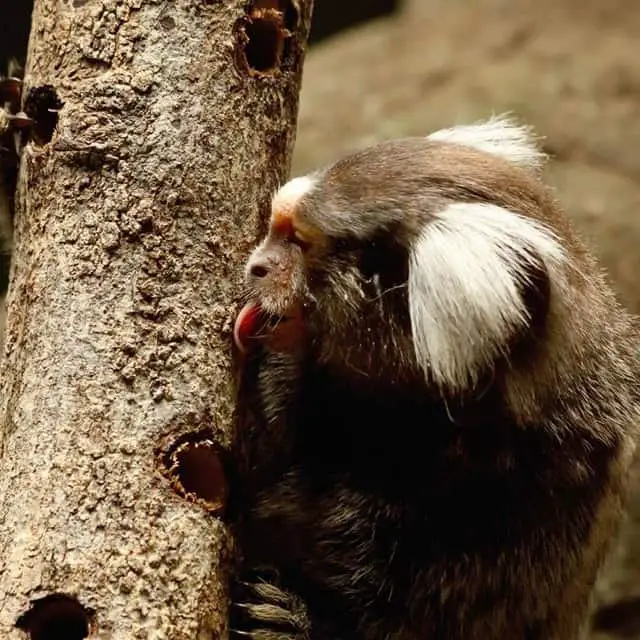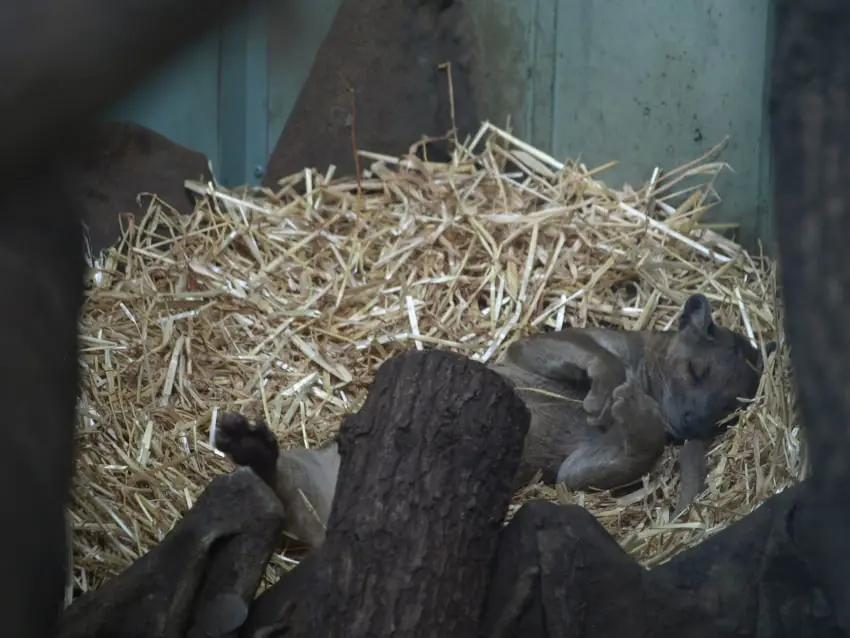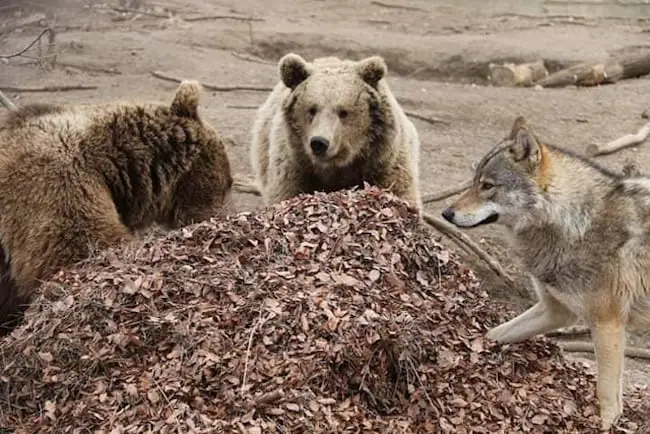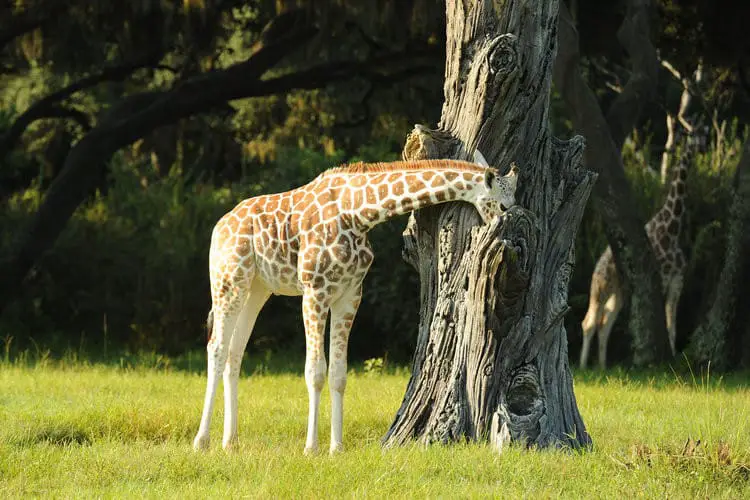Animal enrichment is known as a primary and essential husbandry practice nowadays. It means that enrichment is provided more regularly and is more goal-based then before to stimulate species-specific behaviours and mental activities. To achieve these goals, you have to create a particular choice, change and complexity in the environment for the animals in your care. Consequently, it would be best to have a large amount and variety of enrichment devices. One of the hardest tasks about enrichment programs is finding the resources to make this amount and variety of enrichment. When creating enrichment, it can be very beneficial to use natural materials in your enrichment efforts. This so-called natural enrichment can play an important part to build and implement your enrichment program! In this article snippet, we will have a look at 8 reasons why you should use natural enrichment in your enrichment program.
Natural enrichment is defined as the use of enrichment with (mostly) natural materials to stimulate species-specific behaviours and mental activities.
1. It is cheap or even free
Great and well-developed enrichment programs are very material-intensive and need a large number of resources. This amount of resources can be costly and makes such enrichment programs daunting for facilities that do not have a lot of resources at their disposal. But when you integrate natural materials, you can suppress these costs and make the enrichment program much cheaper. Natural materials can often collected cheap or even free of charges (think of all the natural materials on your zoo site, i.e. leaves and branches). What you use from your local nature, you don’t have to buy in the store.

2. It is plenty available
Natural materials are also very beneficial because of their availability. In autumn, leaves are almost a plaque and pinecones can be found in abundance. After a storm or when trimming the trees, you have plenty of branches and logs. Sand is almost everywhere and can also be cross-exhibited used (i.e. sand from elephants to fill a digging box for meerkats). You can start collecting it even today if you like. And when you make use of your local community, you have even more available to use in your institution.
3. Has olfactory features on its own
One large advantage of using natural material is its olfactory features. Because of rain, wind, use by other animals etc. natural materials contain all kinds of smell that can induce a large variety of exploratory behaviours by many animals. Big carnivores are well-known that they like to roll in big piles of leaves (so next time when cleaning the enclosure, rake the leaves on a pile but don’t throw them away)! But even for hoofed mammals big logs hanging in there enclosure trigger scrubbing behaviours, partly because of fur care, but also because of the smells.
4. It is easy to manipulate for animals
Because of the cheapness and availability of natural materials, it is ideal to use it for manipulative purposes. It will be a shame if costly enrichment devices are damaged or destroyed by animals. Especially rodents are dreaded to damage well-designed enrichment. It would be better to give rodents a lot of manipulative materials like branches, leaves and logs to fulfil their chewing behaviours. Big trunks can also be very useful as scratch poles for big carnivores or push logs for elephants to manipulate.

5. More useful features for animals
Many natural materials are extensively beneficial to fill up puzzle feeders and digging boxes to prolong forage behaviours. You can even use the same enrichment device and create variety and complexity depending on what you use to fill-up the enrichment device. But natural materials have much more useful features. Think of the use of materials as bedding for animals to furnish their sleep and nestboxes, hard-barked branches to naturally trim nails of sloths, meerkats and felids and (the necessary) wear of teeth of many animals with the use of branches and browse. And what about the olfactory features of herbs and flowers…? Natural enrichment can be broadly integrated into your goal-based enrichment program and stimulate your aimed behaviours as well as create variety and diversity.

6. No waste and sustainability
One main benefit of using natural materials is that it has not much to none waste. Depending on your national regulations, you can get rid of used material and store (i.e. give it back) to nature. Many other materials like treated timber, plastics and metals need to be collected and disposed of in designated bins and containers. Natural materials are also much more sustainable. As earlier described, many materials can be found and collected by yourself and are therefor very local available (no transport and processing). Natural materials don’t have to be made with machines, so on this front, it is also better for the environment. And when you use the community as well, you use their “waste” as meaningful enrichment products for the animals in your care. Well, this would also be a fascinating message to communicate to the visitors how you sustainably use materials in the daily care and husbandry management.
7. Easy to use for everyone
As a zookeeper, you have to have many skills and abilities. But with using natural materials, you don’t have to be the perfect handyman for creating enrichment (devices). But also think of the other way: when you are interested in visitor or community involvement to help you build enrichment for animals, the use of natural materials would be extremely beneficial for this purpose. Even more, when you focus on younger visitors and children. Then the educational message and connection between the benefits of enrichment and use of sustainable materials is a very interesting story to tell.

8. Esthetics
At last, I would like to reflect the esthetics of enrichment. Many zoos are building more naturalistic enclosures that mimic the esthetics of the natural environment of the animals and need the visitors to experience the wild animals as if it is living in its natural habitat. And, even when plastics are a huge world problem in nature and unfortunately represents natural habitats nowadays, using plastic looks in enrichment can affect and disturb the experience of these visitors. When using plastic bottles can be very interesting for, for example, chimpanzees, but can also be seen as fallen garbage in the enclosure. These “unnatural” enrichment can influence the understanding that we want visitors to have about our care for the animals. With other words, they can see it as garbage, not as enrichment effort. Natural enrichment fits by far more to this esthetics of the natural environment. It is not said or implied that we can’t use unnatural materials anymore. And even when the institution wants to show the most natural environments to visitors, “unnatural” materials can be used plenty in off-exhibit holding areas.
Examples of useful natural materials as natural enrichment
With these considerations, I hope that natural enrichment can make a huge benefit to your enrichment program. The possibilities can be of great use to create the necessary choice, change and complexity into the animals’ environment. Below a list of many natural enrichment items and ideas, but natural enrichment is by far not limited to these.
- Twigs, branches (with or without leaves), logs, trees, trunks, beams, tree plateaus, hollowed logs, spider wood, cactus wood, rotten wood
- Leaves, pinecones, walnuts, acorns, pine needles
- Sand (white/earth/loam/clay), mud, peat, cocopeat, woodchips, wood bark, hay, straw, wood wool, sawdust, coco fibre
- Grass, herbs, herb plants, plants, bushes, flowers, coconut shells, bamboo, roots, own grown plants/vegetables
- Feathers, trimmed nails, animal hair, dung (check with your vet!)
- Water, stones, rocks, dragon rock, pebbles, shells, grit, gravel
Good luck with implementing natural enrichment in your enrichment program. Have you more items and ideas? You can add in the comments more useful materials or ideas on how to use them.
Share this page!